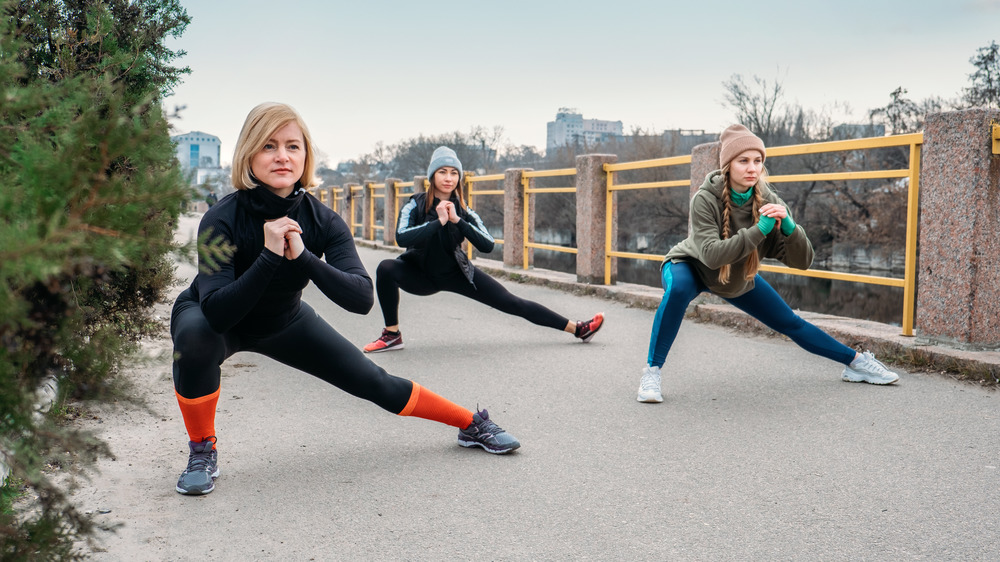This Is How Many People Aren't Interested In Trying HIIT
In the last year, people have had to get more creative when it comes to working out. Not only were people heading outdoors to ride bikes, run, and walk more frequently, but they were also more inclined to start hopping into online virtual fitness classes. That meant, an easier chance to experiment with different types of fitness programs. But for nearly 16 percent of the population, there was one type of exercise that they really wanted to skip: HIIT.
HIIT, high intensity interval training, has become popular in recent years as a way to get a hard workout done in a short amount of time. Rather than lifting heavy weights or doing cardio at a low intensity, high intensity interval training typically involves body weight movements at a rapid pace, skyrocketing your heart rate. These workouts are often used in bootcamp and CrossFit classes, but can be done at home as well (via Harvard Health Publishing).
But not everyone is on board: Health Digest recently conducted a survey of 527 Americans about their exercise and dieting habits and 15.94 percent of respondents said that they have no interest in trying HIIT exercise. Also noteworthy: more than one-third of those surveyed were also not interested in doing workouts that they saw on Instagram.
Why should people try HIIT?
Still, people of all ages and athletic types would be well-served to consider HIIT. "There's a growing consensus that interval training helps people lose weight and may have cardiovascular benefits," cardiologist Stephen Wiviott, M.D., told Harvard Health Publishing. He notes that as you start out, you may need to take more breaks and that your hard efforts might not be that hard. For instance, while a longtime CrossFit enthusiast may be able to do 50 pushups without stopping, you might be breathless and working hard after 10 pushups. Pay attention to how you feel, and adjust as needed.
You can also take advantage of intervals during a normal cardio workout: If you typically walk, add in some bursts of power walking or jogging. If you run, add in some sprints throughout your normal loop, or stop and do a set of pushups every few minutes. It doesn't take much added high intensity effort to see big results (via the Mayo Clinic).


